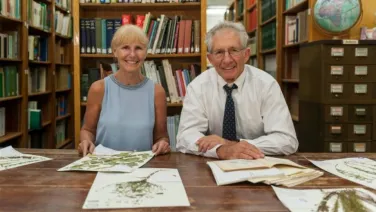News & events
News & events
Find out about our latest news and events.

An international study has found a drought alarm system that first appeared in freshwater algae may have enabled plants to move from water to land more than 450 million years ago – a big evolutionary step that led to the emergence of land animals, including humans.

Human error, not human biology, largely accounts for the apparent decline of mortality among the very old, according to a new report by Saul Newman of the Research School of Biology, ANU. The result casts doubt on the hypothesis that human longevity can be greatly extended beyond current limits.

A scientific breakthrough intended to help boost the yields of food crops has solved a long-standing question of how cyanobacteria, known as blue-green algae, builds the carbon-capturing engines called carboxysomes in a protein liquid droplet formation.

Susanne von Caemmerer is recognised as a worldwide expert for using mathematics to represent the process by which plants convert sunlight, gases and water into sugars and oxygen – photosynthesis.

Fred Chow has dedicated his working life to the study of photosynthesis.

Sam Periyannan was born and brought up on a small sugar cane farm in Southern India. He never dreamed he would become a crop researcher, rather than a cane farmer.

With half a million species and representing a billion years of evolution, a better understanding of the green plant tree of life is crucial for the survival of humankind.

Phloem is the vascular tissue in plants - responsible for transporting sugars from source to sink. It is well established that osmotic currents drive the flow of sap through phloem vessels.
Transcription activator-like effectors (TALEs) are Type-III-effector proteins mainly found in phytopathogenic Xanthomonas species.
Oceans cover 70% of the Earth’s surface, play a vital role in global climate and are home to varied and productive ecosystems.

Tropical forests are highly productive and biodiverse, exchanging more carbon with the atmosphere than any other terrestrial ecosystem and representing the apex of taxonomic and structural diversity on land.
The research line is devoted to the study of the interaction between peanuts and beneficial microorganisms.